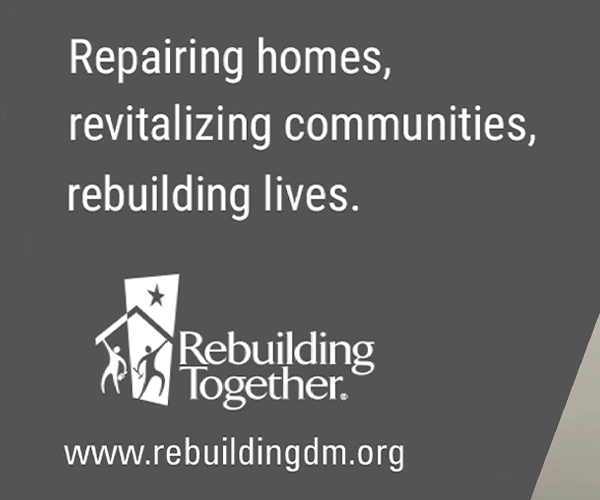Warren Dickinson, left, designed more than 100 Iowa golf courses, including a nine-hole game at Des Moines’ first course between Ingersoll Avenue and Harwood Drive.
By Dave Elbert

As some of the world’s best golfers gather for the 19th annual Principal Charity Classic this week at the Wakonda Club, it’s worth noting how far Des Moines golf has come since a handful of enthusiasts teed off in an overgrown pasture 128 years ago. That modest game inspired the creation of Central Iowa’s first golf course and eventually led to the development of three of the area’s most popular clubs.
The original Des Moines Golf & Country Club
The first recorded game of golf in Des Moines was in the fall of 1897, well behind Burlington (1883) and Fairfield (1892), according to Rick Brown, who wrote “Golden Harvest: Iowa’s Rich Golf History” after many years covering sports for the Des Moines Register.
That first game played out on 40 acres of pasture at the end of the Ingersoll Avenue streetcar line, at Polk Boulevard. A few weeks earlier, attorney Jefferson Polk had said golfers could use the land if they paid property taxes of $150.
On Tuesday, Sept. 28, 1897, his offer was accepted by a dozen local golfers. By that Saturday, Oct. 2, a rough 18-hole course was laid out and balls were flying at what eventually became the Des Moines Golf & Country Club.
The project’s driving forces included Arthur Whitworth, an Englishman whose father owned the Liverpool and Des Moines Packing Co., and N.T. “Nat” Guernsey, who had just returned from Yale, where he was a champion rower.
The original 40 acres was too small for its original 18 holes, so the following year, Warren Dickinson, a local civil engineer, designed a more-playable nine holes. The course went back to 18 holes in 1904 when a 20-year lease was signed for adjacent land. In 1906, members built a three-story clubhouse at 49th Street and Harwood Drive with a rooftop deck that overlooked play.
Local historian John Zeller has explained that golf caught on quickly because wealthy Des Moines residents vacationed in the East where English traditions were popular. When they returned home, Zeller said, they wanted their own yacht, golf and tennis facilities.
Waveland Golf Course
As the golf bug spread, two more courses were built in city-owned parks: an 18-hole course at Waveland Park in 1901, and a nine-hole course at Grandview Park in 1902. Dickinson, a champion golfer, designed both courses. He went on to create more than 100 courses across Iowa by the time he died, in 1941.
Waveland was “one of the finest public golf links in America and one of the best in the world,” according to a 1927 Des Moines Tribune article, which noted the sophistication of its “natural hazards.” Golf at Waveland was free to the public, which was unusual. At the time, the only other free public course in the country was Van Cortlandt Park in the Bronx, in New York City.
Des Moines Golf & Country Club and Waveland grew quickly alongside each other. In 1911 Iowa Amateur Golf Tournament spread across both courses, making it “the first state amateur championship to be contested over 36 holes,” Brown wrote in his book.
Wakonda Club and (the current) Des Moines Golf & Country Club
In the early 1920s, as the country club’s 20-year land lease was coming due, the club split. Half the members, including most of the better golfers, founded the Wakonda Country Club south of downtown.
Others moved the original club to a new location, west of the city limits to property currently owned by Dowling Catholic High School and GuideOne Insurance. The club remained there until the 1960s, when the planned route for Interstate 235 cut directly through the course, prompting the club to move five miles farther west to its current location with a 36-hole course on Jordan Creek Parkway in West Des Moines.











Show Comments (0)